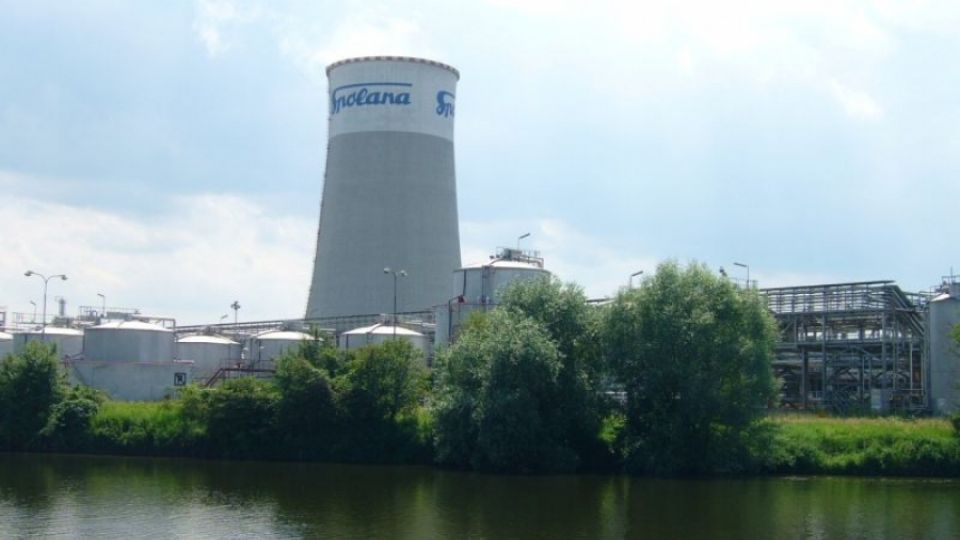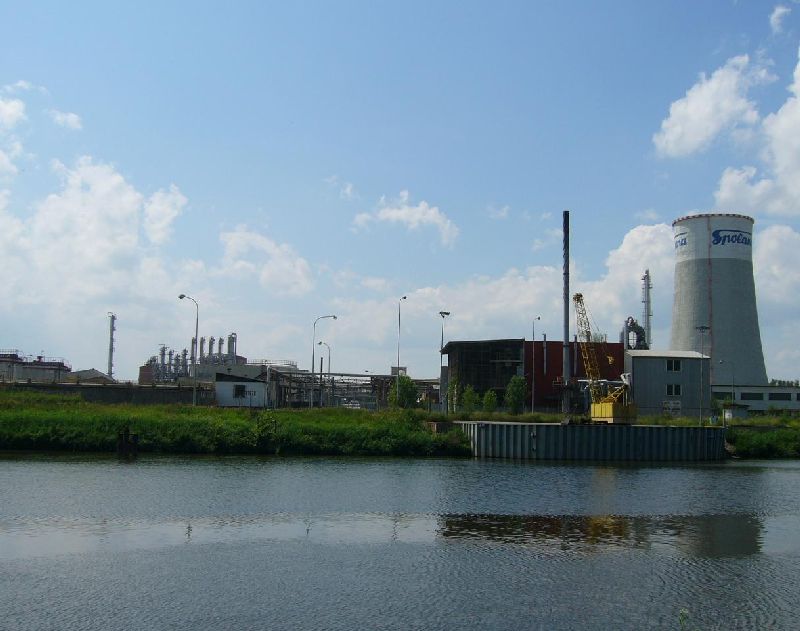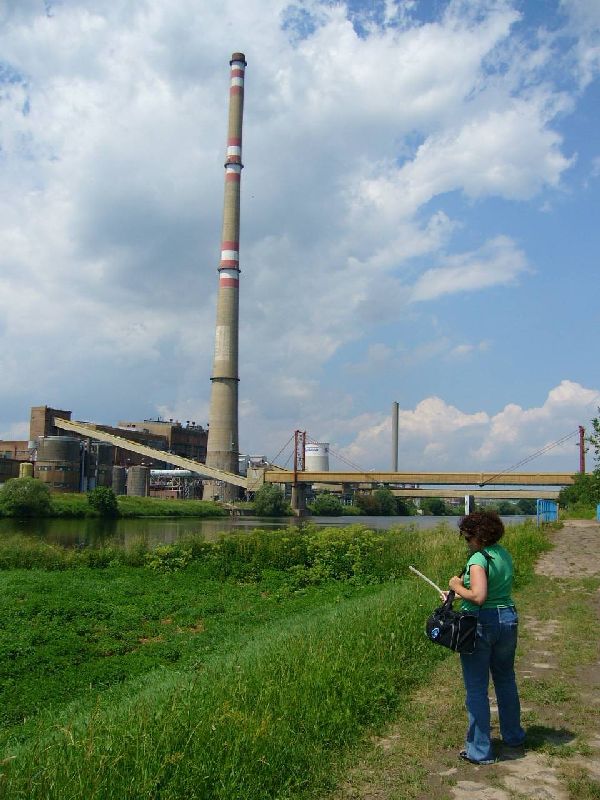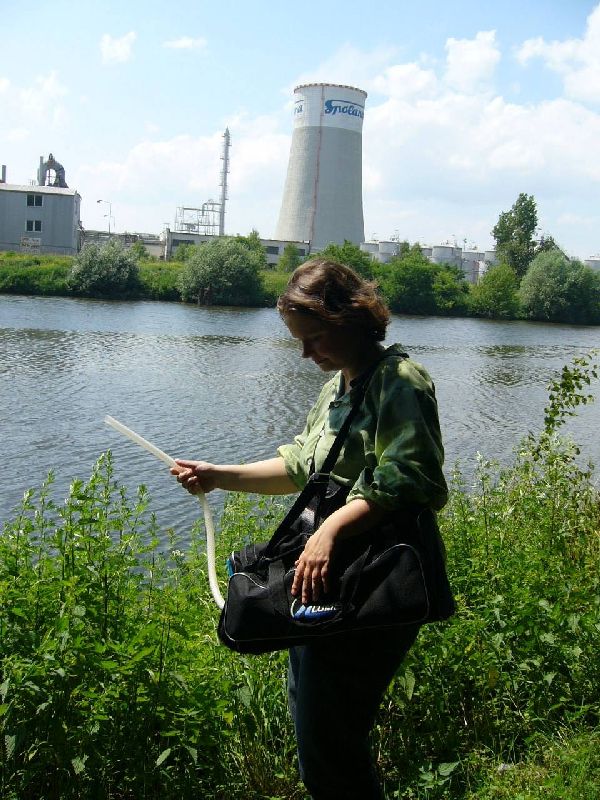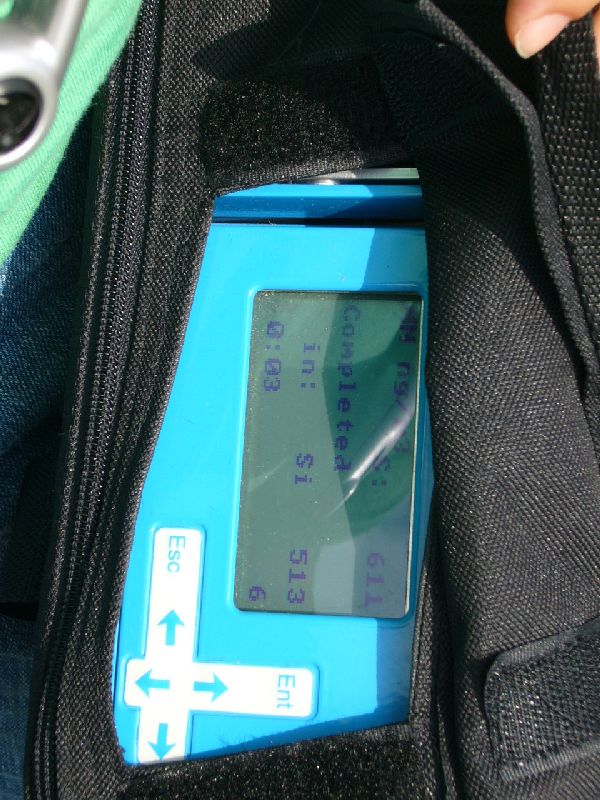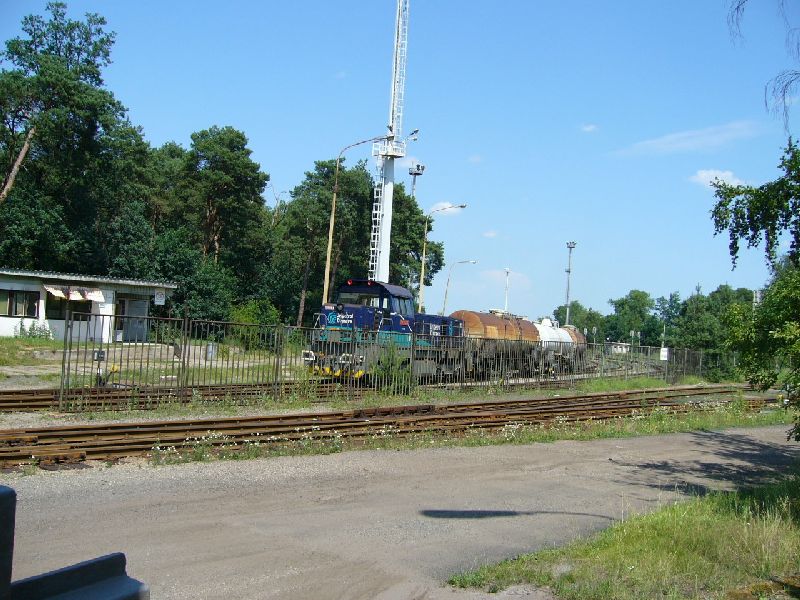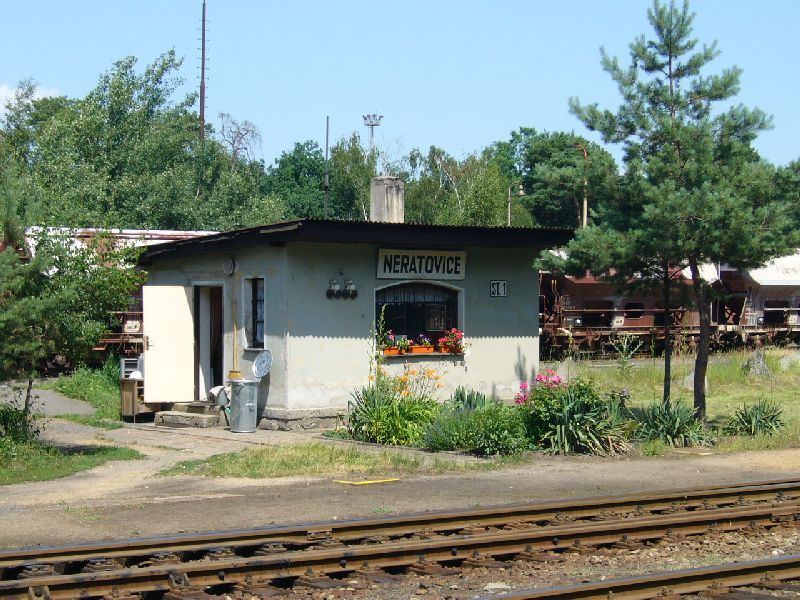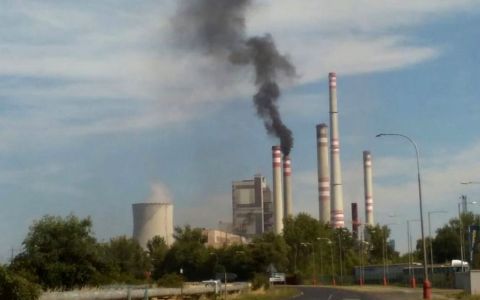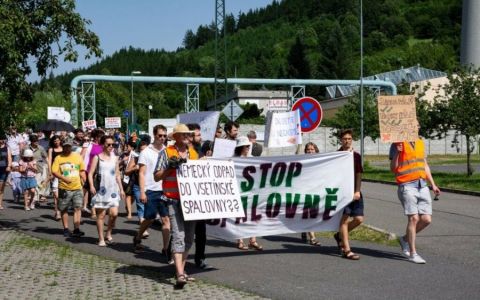Spolana Neratovice is the largest chemical factory producing sodium hydroxide, chlorine and related products in the Czech Republic. The chlorine production at Spolana has been based on the obsolete method of amalgam electrolysis for decades. This method is accompanied by leakage of toxic mercury. The factory has already contaminated the biggest Czech river Elbe with mercury; those accidents threatened lives of thousands of people several times. After many years of lobbying, Arnika was able to enforce the proposal for Spolana to use safer membrane technology from 2014.
History of Spolana begins in the 19th century. In Neratovice, town 30 kilometres from Prague, the manufacture of soaps, oils and candles was started in 1898. Product portfolio varied during the years and included also the production of pesticides that have already been banned at that time with DDT base or lindane production. Also herbicide 2,4,5-T, used by the American army during the Vietnam War (1962 – 1971) as a component of poison gas Agent Orange, was produced there. Spolana exported this herbicide via intermediaries to Western Europe to American army bases. Side products of this production were highly toxic dioxins. During a short period dozens of employees got ill and therefore the production was terminated in 1968.
The United States dispersed Agent Orange from planes to exterminate vegetation. That helped to make the bombing of Vietnamese army bases and supply routes more efficient. In total, 70 000 tons of defoliants were dispersed, containing approximately 150 kilograms of dioxins. We should add that even nanogram concentrations are dangerous to human health. The inhabitants of many Vietnamese regions, as well as some American veterans, still have serious health problems (decades later).
However, even current Spolana’s product portfolio is not without risk. Main articles of the factory are PVC, caprolactam and inorganic compounds such as sodium hydroxide, hydrochloric acid and chlorine. Production has struggled with number of chemical accidents endangering the health of thousands of people.
Disasters Spolana does not disclose
 Photo: Arnika/archive
Photo: Arnika/archive
One of the most serious disasters happened in 2000, when 188 kilograms of chlorine were released to the air. Accident was managed after long 11 hours. A chlorine cloud was visible, moving close the ground and gradually dissolving. Seven firemen were hospitalized after breathing chlorine. Accident had consequences in form of legal actions against Spolana, taken by farmers and foresters from the area.
At first, Spolana denied responsibility and claimed damage on the crop was not caused by chlorine. But expert opinions showed the truth. Later, Spolana accepted the blame and offered financial compensation to all affected. It helped the factory avoid public law-suit.
But that is not the end of the story. In following years, hydrochloride, sulphur dioxide and chlorine were accidentally released repeatedly and chemical alarms of the highest importance (third level) had to be called. In 2002, raging floodwaters brought out a wide range of toxic substances out of the Spolana industrial park. Factory did admit leakage of some substances, but some of them were left unreported. Analysis of river Elbe water, samples of sediments and also poultry from nearby farms proved elevated concentrations of dioxins and polychlorinated biphenyl (PCB).
Mercury in the German port city
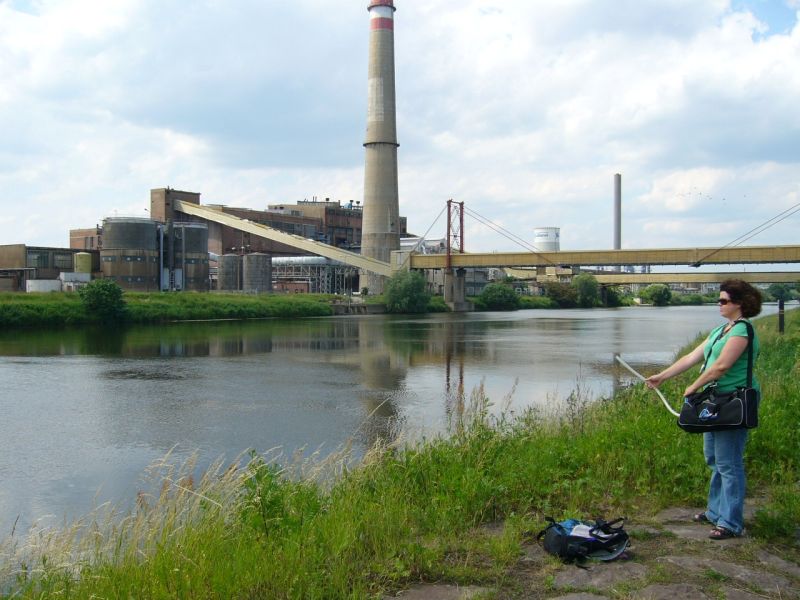 Photo: Arnika/archive
Photo: Arnika/archive
The chlorine production at Spolana is based on out-of-date method of amalgam electrolysis since second half of the 20th century. Dangerous mercury is used in cells acting as negative electrode in the process. During the routine operation, the factory discharges unnecessarily more than quintal of mercury to the air and the water. Further quintals of this toxic metal are produced as a waste.
With no doubt, Spolana is the most serious mercury polluter and remains unequalled in the Mělník district. Arnika points at this fact each year by announcing a ranking list of the most problematic industrial plants. This list draws upon data from the official database of Integrated Pollution Register. With the information from the list available, various media have finally focused on the company. As Spolana employs almost one thousand people, pollution is often ignored and downplayed because of the economic benefits of the production.
The symptoms of mercury poisoning are known for centuries. An exposure of a person to a high concentration can permanently harm the brain and kidneys. Toxicity is also contagious from mother to the foetus and can cause mental retardation, blindness, inability to speak or spasms.
In June 2006 Arnika measured mercury in the air in vicinity of Spolana. The concentration of mercury reached in some places 3 micrograms/cubic metre. Especially the Elbe riverside with waste dump from Spolana was affected, but mercury could also leak from other factories.
As Spolana releases mercury into the largest Czech river Elbe, Arnika ordered (as a part of worldwide monitoring) in 2012 an analysis of bream fish, caught 2 kilometres downstream of Neratovice. Measured level of mercury had exceeded the EU limit three times and was also seven times higher than reference dose of the US Environmental Protection Agency (US EPA). Arnika presented those results during new international agreement preparations. Arnika supported the version of agreement that would secure environmental protection and incorporates also the cases of transboundary mercury pollution.
In the latest comparative study, carried out in 2013, the concentration of mercury in fish bodies has reached the highest values among all studied samples. They exceeded even samples from the very contaminated Russian Volgograd or Thai city of Tha Tum. Also neighbouring Germany complains about Spolana, as mercury flows in the Elbe riverbed to 500 kilometres far Hamburg, where it accumulates in the delta of the river Elbe. The port city has to annually invest large amounts of money into decontamination of the sediments. They include toxic substances, including mercury. Part of the Spolana’s produced toxins can be found also in the North Sea.
The old cell method and its replacement
 Photo: Arnika/archive
Photo: Arnika/archive
Since 2002, a regulation called Integrated Pollution Prevention and Control (IPPC) is valid. According to the document, every 8 years all technologies in factories have to be re-examined. All factories have to repeatedly ask for integrated permission for operation. The goal of the process is to replace old, dangerous operations that needlessly threaten the environment and people from the area. It should persuade owners of factories to invest into the new technologies. Permit issuing is managed (according to IPPC) by regional councils. NGO’s can fully participate in those procedures. The law incorporates also the chlorine production.
In 2006, Arnika applied for the procedure concerning integrated permission for Spolana and enforced the demand for factory modernization. The aim was to push through the new membrane technology, which is the most environmentally friendly possibility of the chlorine production. The mercury and asbestos are not necessary for the production; moreover, very pure solution of sodium hydroxide is the result. Less electricity is consumed comparing to other production methods.
But Spolana decided to save money and asked for an exception, which would allow amalgam electrolysis to be further used. The request stated that it is not the best technology, but the most affordable one. It is used by 47% of EU factories for the chlorine production.
Czech expert opinions on integrated permissions are mostly given by the governmental institution called CENIA (Czech Environmental Information Agency). Its verdict about Spolana case was published in spring 2007. CENIA recommended allowing Spolana the use of amalgam electrolysis until 2015. Spolana promised to install the membrane technology after this date.
Arnika added a list of suggestions to the procedure with Spolana. It highlighted the fact, that according to EU regulation Spolana has to switch to a more environmentally friendly technology (excluding the amalgam electrolysis) and suggested to permit the exception until 2009 only. The regional council considered both Spolana’s and Arnika’s arguments and changed the date for technology replacement to the end of 2014. It also ordered Spolana to ask for integrated permission again. This request has to be focused on the new membrane technology installation. Also Spolana has to annually publish a clear overview of the amount of waste containing the mercury. Also presence of dioxins in the chlorine production’s waste has to be controlled.
The factory’s ownership has changed since the integrated permit authorization – Polish company Anwil became the owner. In 2012 Anwil asked for the extension of the exception for amalgam electrolysis until the end of 2020 (6-year extension). The main reason was the poor economic situation of the factory. This action was unacceptable not only for Arnika, but also for towns and cities in Spolana’s neighbourhood. During the new round of negotiations Arnika presented (among other materials) the results from ongoing research on mercury content in fish, which were alarming. Regional council rejected the Spolana’s request at the end of February 2013.
Even though Arnika, thousands of people living close to Spolana and people living near the river Elbe, would prefer faster modernization of the technology, shortening the term for the switching from amalgam electrolysis to membrane technology by 1 year means considerable reduction of dangerous mercury emissions.
Even though Integrated Pollution Prevention and Control (IPPC) is a complex technical procedure, it provides the ability to force industrial companies to replace polluting and dangerous production technologies by the more progressive ones. Valuable information is provided by Integrated Pollution Registry as all factories have to annually send in their report. There are 93 monitored substances and factories have to report which of them they emit to the environment.
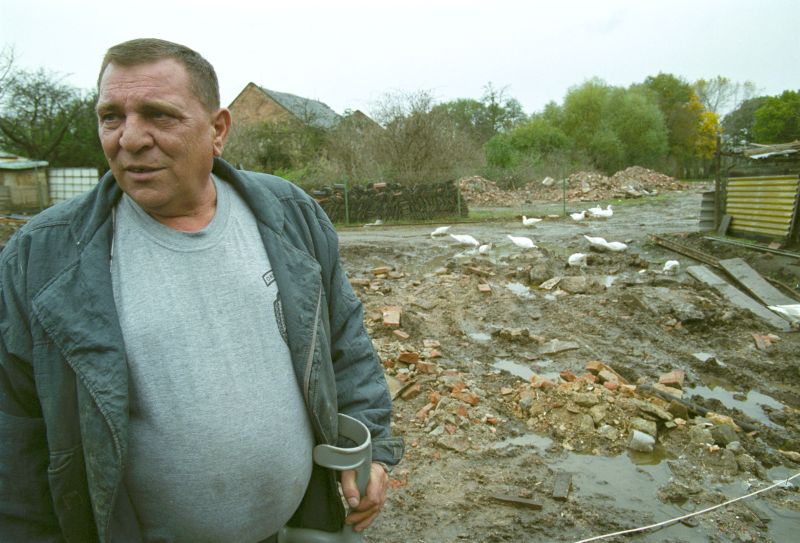 Photo: Greenpeace Czech Republic/archive
Photo: Greenpeace Czech Republic/archive
„When the small siren is ringing at Spolana I already know where the trouble probably happened – usually chlorine leaked from the electrolysis. When the bigger siren joins the hubbub, the chlorine is out of the factory! Then the fire engines arrive. They sprinkle the chlorine cloud to wash it away. Then the PR manager of the factory tells us – the chlorine didn’t leave the factory area. But when firemen don’t manage to water the cloud sufficiently and it crosses the wall, nobody can stop it. Then we suffer from headache, sore throat and skin irritation. My throat feels like I swallowed a cheese grater."
František Štrupl, neighbour of Spolana, who sues Spolana Neratovice
Photos - Mercury measuring 26.6.2006



